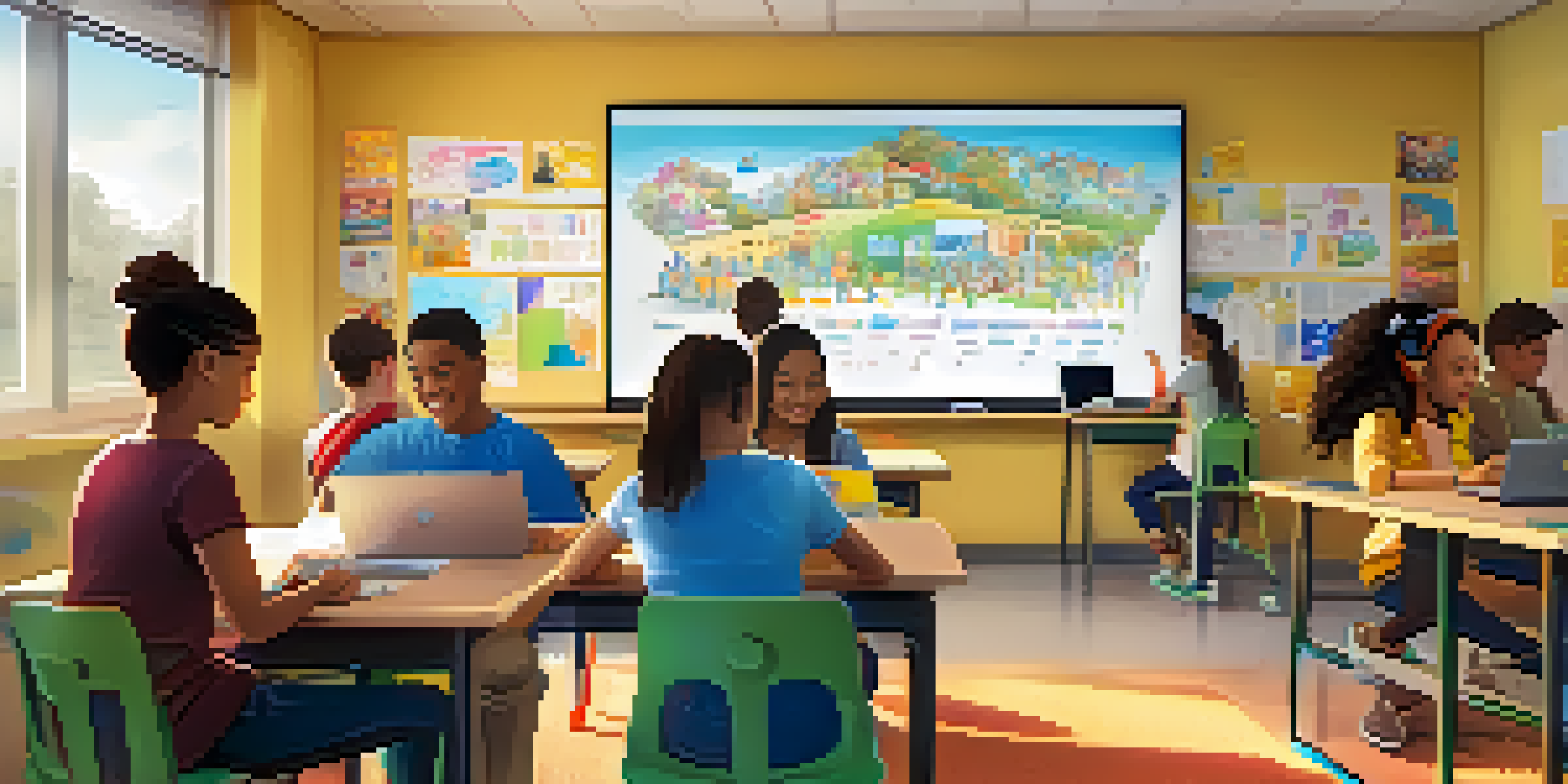Harnessing the Power of Social Media for Assessments

Understanding the Role of Social Media in Assessments
Social media has transformed how we communicate, and it can also play a pivotal role in assessments. Platforms like Twitter, Facebook, and Instagram offer unique ways to gather insights and feedback. By leveraging these platforms, educators can engage with students and parents, creating a more inclusive assessment environment.
Social media is not about the exploitation of technology but service to community.
For instance, using polls on social media can help educators gauge student understanding in real time. This immediate feedback loop allows for adjustments in teaching methods and assessment strategies. Moreover, it encourages students to participate actively in their learning process, making them feel more valued.
Additionally, social media can serve as a repository for student work and feedback, creating a collaborative space for learning. When students see their peers sharing their thoughts and experiences, it fosters a community of support and motivation, enhancing the overall assessment experience.
Creating Engaging Assessments Through Social Media
Engagement is key when it comes to assessments, and social media can help increase this significantly. By designing assessments that incorporate social media elements, educators can make the process more interactive and enjoyable. Think about using Instagram for visual storytelling assignments or Twitter for concise reflections on readings.

This approach not only caters to various learning styles but also makes assessments feel less daunting. When students are excited to share their work on a platform they enjoy, they are likely to produce higher quality submissions. Plus, it allows for creativity and personal expression, which can lead to deeper understanding.
Social Media Enhances Engagement
Incorporating social media into assessments fosters active participation and creativity among students.
Moreover, social media platforms often have built-in features that enhance collaboration, such as hashtags for categorizing content or stories for sharing progress. These tools can transform traditional assessments into vibrant, community-driven projects that encourage peer feedback and support.
Utilizing Feedback Mechanisms on Social Media
Feedback is essential for learning, and social media offers innovative ways to provide it. Educators can create feedback loops by encouraging students to share their work and receive input from peers and instructors alike. This collaborative feedback model not only improves student performance but also nurtures a growth mindset.
The greatest danger in times of turbulence is not the turbulence; it is to act with yesterday's logic.
For instance, using Facebook groups or private Twitter chats can facilitate discussions where students can ask for and give feedback on each other's work. This not only helps them refine their assessments but also builds critical thinking and communication skills. When students feel comfortable sharing their ideas, they are more likely to take risks in their learning.
Additionally, educators can use platforms like LinkedIn to connect students with industry professionals who can provide real-world feedback. This not only enriches the assessment process but also gives students valuable insights into their future careers.
Building a Community of Learners via Social Media
One of the most significant advantages of social media is its ability to create communities. By establishing a class hashtag or a dedicated Facebook group, educators can cultivate a sense of belonging among students. This community atmosphere encourages collaboration and shared learning experiences, enhancing the overall assessment process.
When students feel they are part of a community, they are more likely to engage with the material and support each other's learning journeys. For example, group projects shared on social media can foster teamwork and accountability. Students can celebrate each other's successes and provide encouragement during challenges.
Community Building Through Platforms
Social media creates a supportive learning community, encouraging collaboration and motivation among students.
Moreover, a strong community can lead to increased motivation and a positive attitude toward assessments. When students see their peers actively participating and supporting one another, it creates an environment where everyone is inspired to perform their best.
Incorporating Multimedia in Assessments Using Social Media
Social media excels at multimedia content, which can be harnessed for assessments. Educators can encourage students to create videos, podcasts, or infographics as part of their assignments, making the evaluation process more dynamic. This variety not only caters to different learning preferences but also keeps students engaged.
For example, a history assignment could involve students creating a TikTok video summarizing a historical event. This approach allows students to demonstrate their understanding creatively and innovatively. It also gives them an opportunity to practice digital literacy skills, which are essential in today's world.
Incorporating multimedia can also make assessments more relevant to students' lives, as they often use these formats in their everyday interactions. When assessments resonate with their interests, students are more likely to invest time and effort into their work.
Ensuring Privacy and Security in Social Media Assessments
While social media offers exciting opportunities for assessments, it's crucial to prioritize privacy and security. Educators must establish clear guidelines for sharing work and engaging with peers on these platforms. This ensures that students feel safe and protected while participating in these innovative assessment strategies.
For example, using private groups or accounts can help maintain confidentiality and control over the content shared. Additionally, educators should educate students about digital footprints and the importance of protecting their personal information online. This knowledge empowers students to navigate social media responsibly, both in and out of the classroom.
Ensuring Privacy is Essential
Establishing clear guidelines on privacy and security helps create a safe environment for students during assessments.
Creating a safe online environment not only builds trust but also encourages more open and honest communication. When students feel secure, they are more likely to share their thoughts and experiences without fear of judgment.
Evaluating the Effectiveness of Social Media in Assessments
To truly harness the power of social media for assessments, it's essential to evaluate its effectiveness. Educators should consider student engagement, performance, and feedback when assessing the impact of these strategies. This data can help refine future assessment practices and ensure they align with learning objectives.
Conducting surveys or focus groups after assessments can provide valuable insights into students' experiences. Understanding what worked well and what could be improved helps educators make informed decisions about their teaching strategies. It also shows students that their opinions are valued, fostering a culture of continuous improvement.

Moreover, tracking performance metrics on social media can offer a quantitative perspective on student engagement. By analyzing how students perform on assignments shared through these platforms, educators can identify trends and adjust their approaches accordingly for better outcomes.